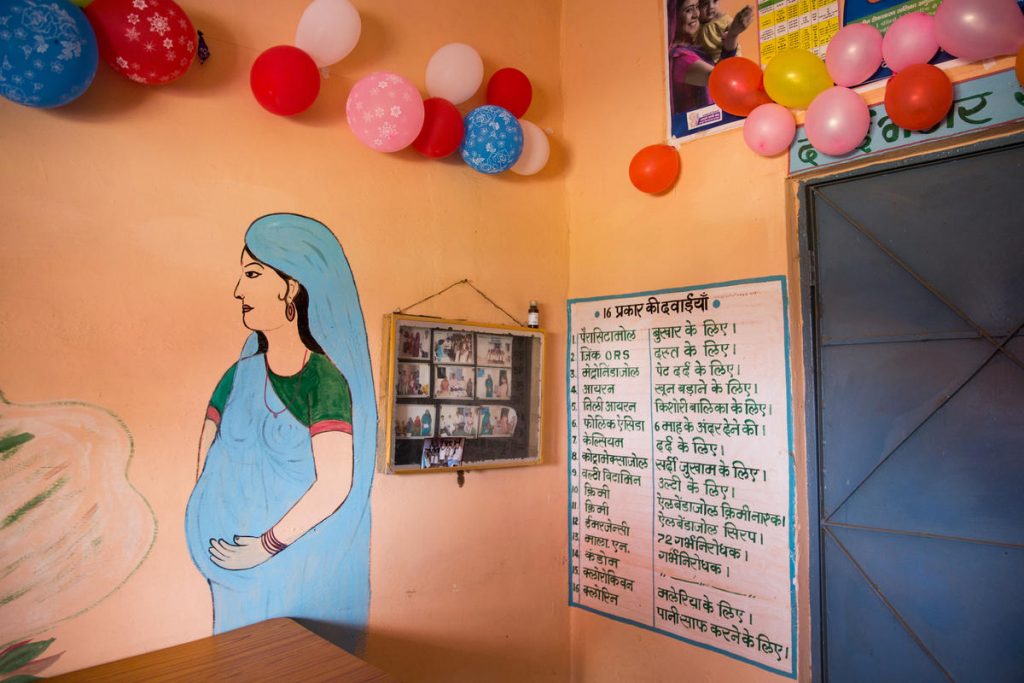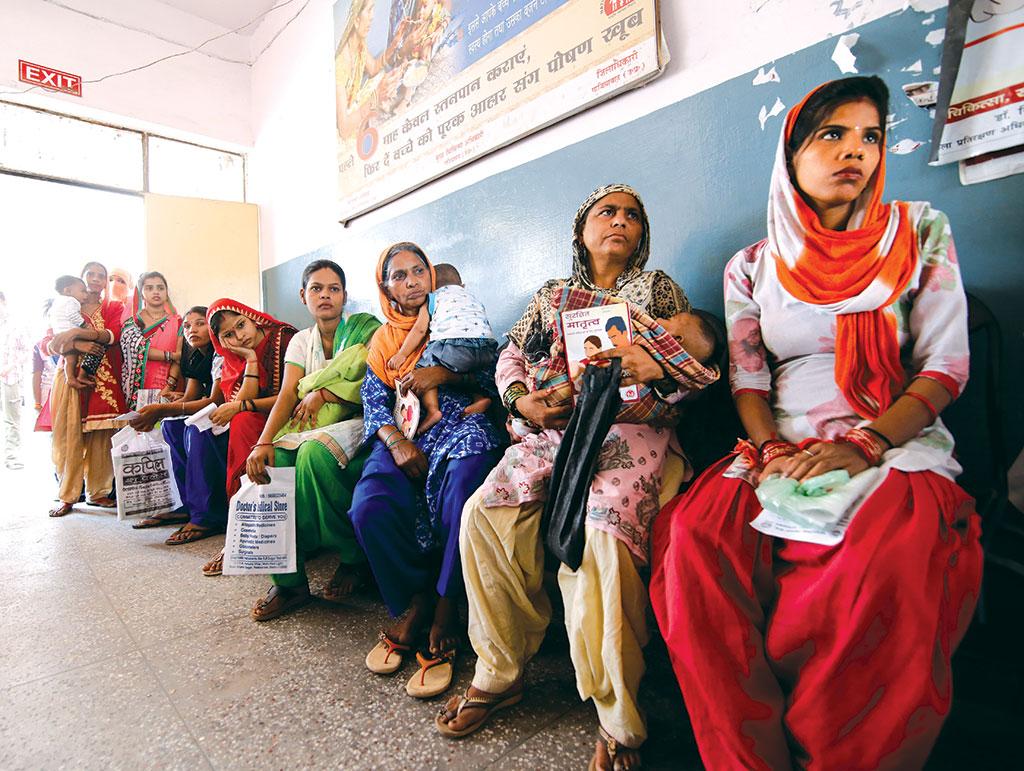Posted by Mayurdhar Devolla
Around 70,000 children are born every day in India. This means that there is a large group of pregnant women and lactating mothers who require care (medical attention and nutrition), resources (income support due to loss of wages), as well as social support. This is especially true for first-time mothers, who form 49.5 percent of all pregnant and lactating women. Apart from family support, these three critical needs have to be fulfilled by the state, at least for women from marginalised communities. In the organised sector, pregnant women are entitled to 26 weeks of maternity benefits in accordance with the Maternity Benefits Act. However, 95 percent (or 195 million) of the female workforce in India is employed in the informal sector, and does not have access to these benefits.
The Government of India, through the Pradhan Mantri Matru Vandana Yojana (PMMVY), provides a conditional cash transfer of INR 5,000 (in three installments) to pregnant and lactating women, for their first live birth. This cash transfer is meant to partially compensate for the mother’s loss of wages as well as to help meet health and nutritional needs. The stated objective of PMMVY is that the cash incentive provided would lead to improved health-seeking behaviour, as the cash benefit is paid out only to those women who complete antenatal check-ups, opt for an institutional delivery, and complete immunisation.
In addition, a pregnant woman also receives the cash incentive of INR 1,000 when she opts for an institutional delivery, under the Janani Suraksha Yojana (JSY).
This article examines how the two main components of PMMVY, ie, conditional cash transfer and health-seeking behaviour, can be made more effective, and discusses how the scheme can be strengthened, especially in the context of the ongoing COVID-19 pandemic.
In the organised sector, pregnant women are entitled to 26 weeks of maternity benefits in accordance with the Maternity Benefits Act. However, 95 percent (or 195 million) of the female workforce in India is employed in the informal sector, and does not have access to these benefits.
Increase The Amount Of Cash Transfer
The payment of INR 5,000 provided over one year under PMMVY as compensation for wage loss, amounts to merely one month’s wages (calculated based on the daily wage rate of INR 202 that is paid under the Mahatma Gandhi National Rural Employment Guarantee Act or MGNREGA). This amount is inadequate and needs to be increased. This is especially important in the current context, as the lockdown has led to income loss not just for women, but for others in the household as well. This loss of wages is likely to extend beyond the time period around the birth of the child. Moreover, there is limited access to nutritional requirements during lockdowns.
Hence, now more than ever, there is a need to ensure that pregnant women from the unorganised sector, and others availing PMMVY, are provided with at least 12 weeks of wage compensation, amounting to about INR 15,000. This is already being done under a few state-level schemes, such as the Dr Muthulakshmi Maternity Benefit Scheme in Tamil Nadu, which provides a total cash benefit of INR 18,000, and the KCR KIT scheme in Telangana, which provides INR 12,000-13,000. These schemes also have fewer administrative conditions to access the cash benefit.
Also read: Is Childbirth The Only Prerequisite?: On The Maternity Benefit (Amendment) Bill…
Decrease The Number of Conditions to Receive the Benefit
Apart from increasing the amount of compensation, there should also be fewer conditions to claim the amount. Conditions such as check-ups with doctors and immunisation, that aim to enable health-seeking behaviour are necessary, but they are also accompanied by several administrative hurdles. For instance, a beneficiary is required to submit her husband’s Aadhar card to receive the benefit, and various documents are collected separately for each installment, instead of all at once. These conditions act more as a barrier to access the benefit, rather than an incentive to access healthcare.
The low accessibility of the benefit is illustrated by the fact that of the 62.8 lakh people registered under the scheme between April 2018 and July 2019, only 38.3 lakh received all three installments. One way to fix this is to reverse the payout structure in the three installments, which is currently 20 percent-40 percent-40 percent. This would serve as an incentive for more women to register for the scheme, and ensure that more women get higher payouts.

We Need to Incentivise Health-Seeking Behaviour
While de-linking the cash transfer from conditions that encourage health-seeking behaviour is important, it raises the question: How do we then ensure that pregnant women receive adequate antenatal care? During the lockdown, women have avoided visiting anganwadis and hospitals, where they would earlier receive antenatal care. Additionally, the services of frontline workers, such as ASHA workers and ANMs, have been diverted towards curbing the pandemic. Government efforts to deliver nutritional requirements at home have not been very effective, and may not be feasible in the long run.
One potential solution for this is to provide pregnant women with ‘care kits’ as an incentive for seeking healthcare at hospitals. These kits could include hand sanitisers, masks, long-lasting nutritional supplements (such as panjiri) during antenatal check-ups, and a baby mattress, baby soap, and other essentials during institutional deliveries.
While pregnant women and lactating mothers are entitled to maternity benefits under the Pradhan Mantri Matru Vandana Yojana (PMMVY), there is much to be done to strengthen the scheme and make it more effective.
Here, it is important that these incentives are delivered to the women at the time of fulfilling the conditions, rather than later or over a period of time. This will allow the recipients to hold the authorities accountable, and demand and verify the kits, unlike with cash transfers, which can keep getting delayed. This will ensure that both health and nutritional needs of women are taken care of at the time of antenatal check-ups.
Also read: Maternal Cash Benefits Have Existed Since 3 Years. Why Is The…
While the current pandemic is proving to be quite challenging for pregnant women, it is also a chance to demand increased public investments in the health and welfare of women and children. The hope is that as amounts of cash and other benefits provided increase, there would also be a greater uptake of the programme by women.
—
Know more
- Understand how PMMVY is implemented and the process to avail the cash benefits.
- Explore findings from the Jaccha Baccha Survey 2019 to understand the gaps in the implementation of PMMVY.
- Read about the problems women have been facing in accessing PMMVY, including gaps in information, inability to procure mandatory documents, and payment delays.
Mayurdhar Devolla is the lead of operations at Indus Action, a policy implementation organisation that works to bridge the gap between law and action. He works closely with the state teams at Indus Action and enjoys working with the government. His long-term focus is on building solutions for a positive social impact in education, sanitation, sports, and the environment.
This piece was first published on India Development Review (IDR) and has been re-published here with consent.
Featured Image Source: Kractivism
About the author(s)
India Development Review (IDR) is India's first independent online media and knowledge platform for the development community.




